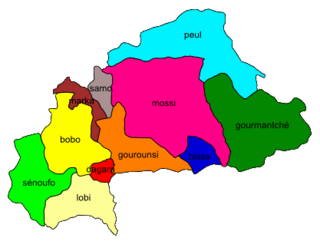
The Ivatan language, also known as Chirin nu Ivatan, is an Austronesian language spoken in the Batanes Islands of the Philippines.
Rapa Nui or Rapanui, also known as Pascuan or Pascuense, is an Eastern Polynesian language of the Austronesian language family. It is spoken on Easter Island, also known as Rapa Nui.
Pukapukan is a Polynesian language that developed in isolation on the island of Pukapuka in the northern group of the Cook Islands. As a "Samoic Outlier" language with strong links to western Polynesia, Pukapukan is not closely related to any other languages of the Cook Islands, but does manifest substantial borrowing from some East Polynesian source in antiquity.
Vaeakau-Taumako is a Polynesian language spoken in some of the Reef Islands as well as in the Taumako Islands in the Temotu province of Solomon Islands.
Mono, or Alu, is an Oceanic language of Solomon Islands reported in 1999 to be spoken by 660 people on Treasury Island, 2,270 on Shortland Island, and 14 on Fauro Island.
Sulka is a language isolate of New Britain, Papua New Guinea. In 1991, there were 2,500 speakers in eastern Pomio District, East New Britain Province. Villages include Guma in East Pomio Rural LLG. With such a low population of speakers, this language is considered to be endangered. Sulka speakers had originally migrated to East New Britain from New Ireland.
Manam is a Kairiru–Manam language spoken mainly on the volcanic Manam Island, northeast of New Guinea.
Oroha, categorized as an Austronesian language, is one of many languages spoken by Melanesian people in the Solomon Islands. It is also known as Maramasike, Mara Ma-Siki, Oraha, and Oloha, and is used primarily in the southern part of Malaita Island within the Malaita Province. Little Mala is composed of three indigenous languages of the 'Tolo' people which are Na’oni, Pau, and Oroha. They are all slightly different, yet come from the same origin. The three languages may be thought of as different dialects of the same language. The three Tolo villages now harbor schools under the Melanesian Mission.

East Ambae is an Oceanic language spoken on Ambae, Vanuatu. The data in this article will concern itself with the Lolovoli dialect of the North-East Ambae language.
Apma is the language of central Pentecost island in Vanuatu. Apma is an Oceanic language. Within Vanuatu it sits between North Vanuatu and Central Vanuatu languages, and combines features of both groups.
Ughele is an Oceanic language spoken by about 1200 people on Rendova Island, located in the Western Province of the Solomon Islands.

Dagaare is the language of the Dagaaba people of Ghana, Burkina Faso, and Ivory Coast. It has been described as a dialect continuum that also includes Waale and Birifor. Dagaare language varies in dialect stemming from other family languages including: Dagbane, Waale, Mabia, Gurene, Mampruli, Kusaal, Buli, Niger-Congo, and many other sub languages resulting in around 1.3 million Dagaare speakers. Throughout the regions of native Dagaare speakers the dialect comes from Northern, Central, Western, and Southern areas referring to the language differently. Burkina Faso refers to Dagaare as Dagara and Birifor to natives in the Republic of Côte d'Ivoire. The native tongue is still universally known as Dagaare. Amongst the different dialects, the standard for Dagaare is derived from the Central region's dialect. Southern Dagaare also stems from the Dagaare language and is known to be commonly spoken in Wa and Kaleo.
The Owa language is one of the languages of Solomon Islands. It is part of the same dialect continuum as Kahua, and shares the various alternate names of that dialect.

Stéphanie Alexandra Mina Sokolinski, known professionally as Soko, is a French singer and actress. She released her debut single "I'll Kill Her" in 2007. It achieved airplay success in several European countries as well as Australia, peaking at number three on the Danish music charts, and was included on her debut EP Not Sokute (2007). Her debut studio album I Thought I Was an Alien was released in 2012 and contains the single "We Might Be Dead by Tomorrow", which achieved ninth place on the Billboard Hot 100. Ensuing years saw the releases of her second and third studio albums My Dreams Dictate My Reality (2015) and Feel Feelings (2020).
Lau, also known as Mala, is an Oceanic language spoken on northeast Malaita, in the Solomon Islands. In 1999, Lau had about 16,937 first-language speakers, with many second-language speakers through Malaitan communities in the Solomon Islands, especially in Honiara.
Biak, also known as Biak-Numfor, Noefoor, Mafoor, Mefoor, Nufoor, Mafoorsch, Myfoorsch and Noefoorsch, is an Austronesian language of the South Halmahera-West New Guinea subgroup of the Eastern Malayo-Polynesian languages.
The Anuta language is a Polynesian Outlier language from the island of Anuta in the Solomon Islands. It is closely related to the Tikopia language of the neighboring island of Tikopia, and it bears significant cultural influence from the island. The two languages have a high degree of mutual intelligibility, although Anutans can understand Tikopians better than the reverse.
Pijin is a language spoken in Solomon Islands. It is closely related to Tok Pisin of Papua New Guinea and Bislama of Vanuatu; the three varieties are sometimes considered to be dialects of a single Melanesian Pidgin language. It is also related to Torres Strait Creole of Torres Strait, though more distantly.
Mav̋ea is an Oceanic language spoken on Mavea Island in Vanuatu, off the eastern coast of Espiritu Santo. It belongs to the North–Central Vanuatu linkage of Southern Oceanic. The total population of the island is approximately 172, with only 34 fluent speakers of the Mav̋ea language reported in 2008.
Merei or Malmariv is an Oceanic language spoken in north central Espiritu Santo Island in Vanuatu.



